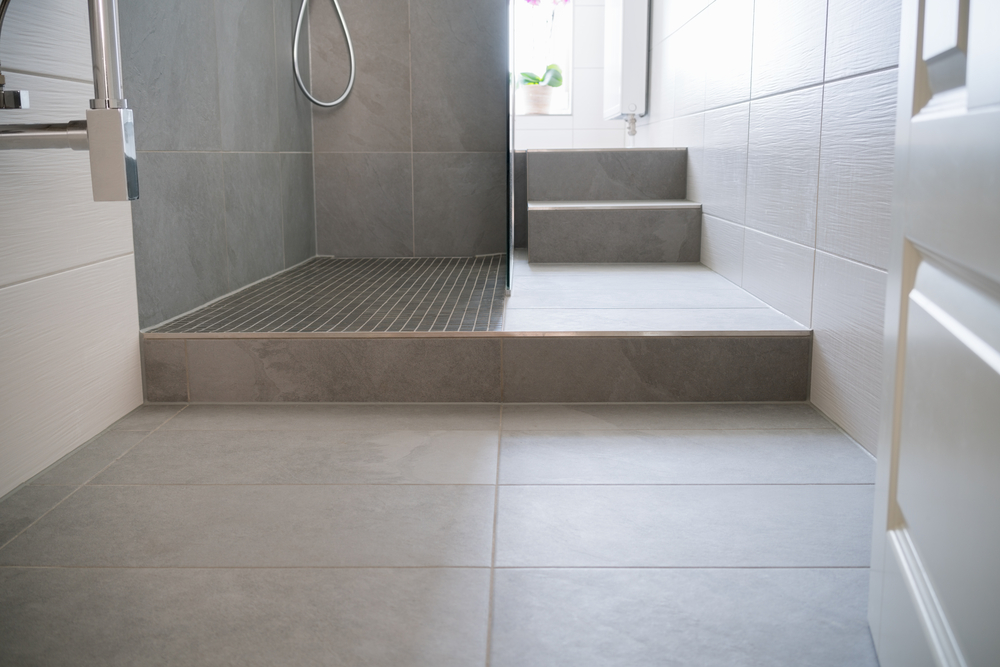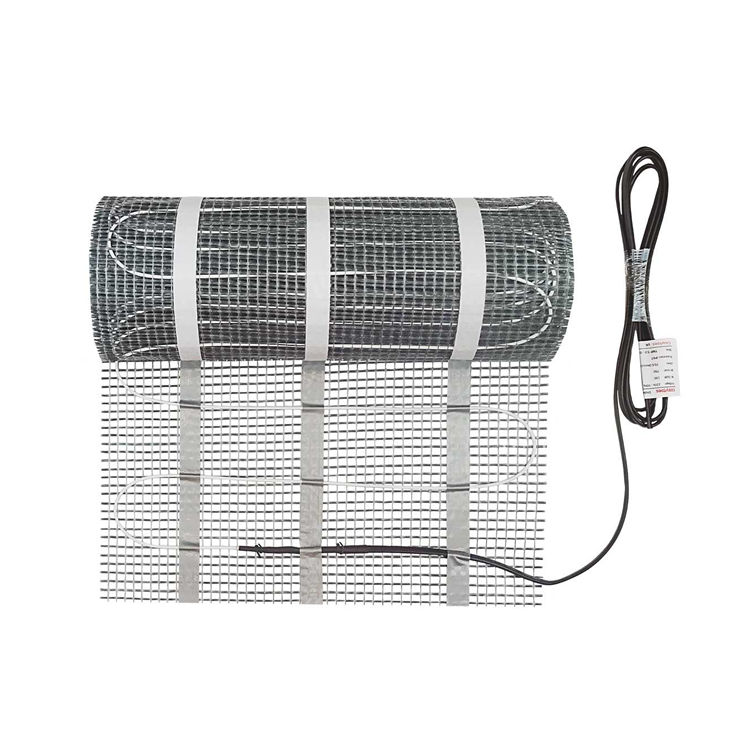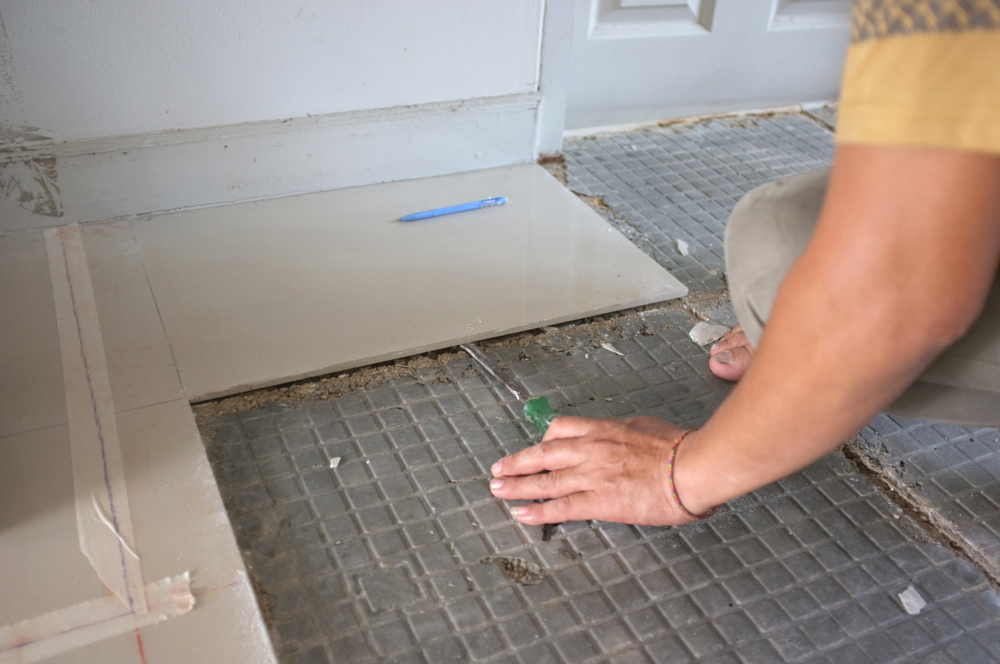How to Install Underfloor Heating

Our electric underfloor heating mats are a popular choice because they are easy to install compared to hot water systems. Most DIY enthusiasts find they are able to fit them with the help of a registered electrician. Underfloor heating is easiest to install before laying down your floor, making it ideal for new builds, retrofits and bathroom renovations.
So how do you go about adding this to your space?
Check What Type of Floor You Have

The first step is to check what type of floor structure you have before planning to install underfloor heating.
Solid/Concrete Floors
All solid floors (such as concrete, screed or asphalt) need to be insulated with backer boards before installing underfloor heating. The heating mats are then placed directly onto the boards with adhesive. A waterproof membrane may also be needed to act as a vapour barrier and prevent damp.
Floating Floors
A floating floor does not need to be nailed or glued to the sub-floor below. This is the best type of floor for underfloor heating because it makes heating mats easy to fit. Once your heating system is installed in the space provided, you can finish with laminate, vinyl, ceramic tiles, wood, chipboard, or any floor covering you desire.
How To Fit Underfloor Heating - A Step By Step Guide

Once you have insulated or removed existing floors, you are ready to start laying and starting to install the underfloor heating. Note that installation kits will vary between brands, so always read instructions carefully.
- Roll out the underfloor heating mat onto the floor, starting from the edge of the room.
- Use a pair of scissors to cut the length of the mat to size. Make sure you do not cut the electrical element, only the fibreglass mesh.
- Once you have cut your piece, repeat this action until all places you want to be heated are covered.
- Cover only the areas of the floor you will walk on, avoiding the space under the bath tub and shower.
- Once you are happy with the coverage, peel off the backing on the heating mats to stick them down.
- Next install the sensor, following the instructions provided in your kit. If you have got a solid floor, you may want to cut an indent into the insulation board, so the probe sits nice and flush.
- Employ a qualified electrician to make the final connection of the mats to your mains electricity.
- After testing your mats with a multi-meter to ensure they are working, you are ready to start laying down the levelling compound and flexible floor adhesive.
Choosing A Floor Covering

The good news is that most underfloor heating mats can be used with every type of floor covering, and are versatile for everything from concrete to wood.
Ceramic Tiles / Stone / Terrazzo
Underfloor heating mats are ideal for cold surfaces, as the heat will rise and can warm your feet in a matter of minutes. Some underfloor heating kits are specifically designed for tiled areas, meaning that you don't have to be afraid of sticking to conventional or non-tiled flooring. The CosyToes TradeMat Plus, for example, is ideal for tiled flooring and wetrooms.
Wood Planks / Parquet / Laminate Flooring
Evenly distributed heat is the best way to warm up wood floors, because they can distort in extreme temperatures. This is why electric underfloor heating installation is ideal. It will warm your room in a gentle and controlled way. For precise heating control, fit your underfloor heating system with a thermostat. This will allow you to use programming to keep the temperatures just right.
Linoleum
Linoleum is widely used because it is both cheap and compatible with underfloor heating systems. But remember that linoleum floors can dry out if they get too hot, so an advanced heating control is recommended. You should also choose an underfloor heating kit with a sensor that has a maximum limit function.
Carpet
With underfloor heating, carpet may not warm up as quickly due to the insulating effect it has. For best performance, choose a carpet with a 1.5 tog rating or below.
Do’s and Don’ts for Installing Underfloor Heating
When looking to install your underfloor heating, ensure to follow these key do's and don'ts to minimise the risk of anything going wrong.
Do Use A Levelling Compound
Using a levelling compound before tile adhesive will create better heat distribution and protect your cables.
Do Use A Hot Glue Gun
Glue guns are safe for adhering your mats down if the sticky backing is not enough for the task.
Do Not Overlap Cables
Cables on underfloor heating mats must not be crossed. Doing so will cause overheating in a localised area, causing damage to the system.
Do Not Leave Gaps in Adhesive
Leaving gaps in your levelling compound or adhesive will cause air pockets, leading to uneven heat and cable damage.
Do Not Leave Cables Exposed
All heating elements should be fully enclosed by the floor covering in order to prevent problems of overheating.
Want to find out more about underfloor heating? Well, we have a handy guide on the costs of underfloor heating here that can help you understand whether this is both right for you, and affordable to run in your home.